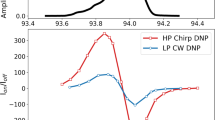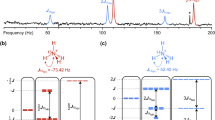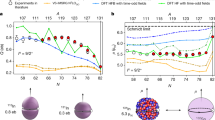Abstract
WE have found that some of the proton magnetic resonances of the alkyl groups of several types of organophosphorus compounds are doubled. This doubling is in addition to the resonance multiplication that would be predicted from coupling with other magnetic nuclei in these compounds. So far we have observed resonance doubling for three types of structures. Type (I) is exemplified by 2-propylphenylphosphinyl chloride. In compounds of this type, the alkyl group is directly linked to the phosphorus atom. Type (II) is exemplified by di-2-butyl phenylphosphate or di-2-butyl phenylphosphonate. In such compounds the alkyl group is linked through an oxygen atom to the phosphorus atom. Type (III) is exemplified by di-2-propyl phenylphosphonite, in which the phosphorus is trivalent.
This is a preview of subscription content, access via your institution
Access options
Subscribe to this journal
Receive 51 print issues and online access
$199.00 per year
only $3.90 per issue
Buy this article
- Purchase on Springer Link
- Instant access to full article PDF
Prices may be subject to local taxes which are calculated during checkout
Similar content being viewed by others
References
Drysdale, J. J., and Phillips, W. D., J. Amer. Chem. Soc., 79, 319 (1957).
Nair, P. M., and Roberts, J. D., J. Amer. Chem. Soc., 79, 4565 (1957).
Author information
Authors and Affiliations
Rights and permissions
About this article
Cite this article
SIDDALL, T., PROHASKA, C. & SHULER, W. Doubling of the Proton Magnetic Resonances of Certain Organophosphorus Compounds. Nature 190, 903–904 (1961). https://doi.org/10.1038/190903a0
Issue Date:
DOI: https://doi.org/10.1038/190903a0
This article is cited by
Comments
By submitting a comment you agree to abide by our Terms and Community Guidelines. If you find something abusive or that does not comply with our terms or guidelines please flag it as inappropriate.



